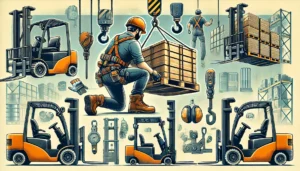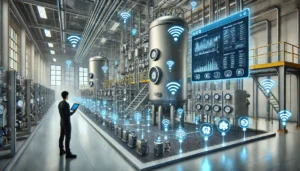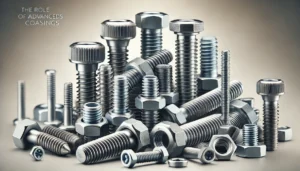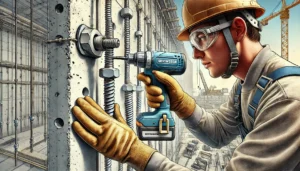AI technology is revolutionising the industrial manufacturing sector, with quality control emerging as one of its key components. Unlike other functions which can operate with reduced oversight, quality control remains a critical pillar that needs meticulous attention, given a slight oversight can lead to dire consequences. Because of evolution in technology, debates on manual inspection versus AI-derived approaches have dominated the industrial sector. Within this context lies the objective of this comparative study that tries to analyze the relative pros and cons of both approaches. Company clients focus on integrating evolving technologies with proven strategies to enhance service delivery, quality management remains a non-negotiable priority.
Section 1: Understanding Quality Control
Quality control is more than just a procedure in the industrial domain; it is a commitment to reliability, safety, and customer satisfaction. It includes various techniques which ensure products are manufactured according to certain specifications and are not defective. This is especially important in sectors like infrastructure, construction, and engineering because the components such as valves, pipe fittings, and safety products must function correctly to ensure safe and effective operations. Induskart, serving a wide clientele including industry leaders like Larsen and Toubro and Alstom, makes indisputable quality control the cornerstone of their strategic positioning in the market. Their product lines undergo multi-level inspection processes, fulfilling the stringent standards demanded by these industries.
Section 2: Manual Inspection
Overview: This is one of the oldest techniques of maintaining quality where skilled workers manually check products or samples for any unmet standards or discrepancies. This technique places great reliance on human skills and reasoning.
Advantages:
- Personal Expertise: Skilled people tend to have a higher level of acumen in differentiating between seemingly similar products and sophisticated product attributes.
- Flexibility in Unpredictable Situations: As with the majority of tasks performed by people, these inspectors can change their approach very quickly in the face of unscheduled changes concerning the inspection process.
Disadvantages:
- Human Mistake: Even with advanced skills, manual checks are vulnerable to errors from exhaustion, biases, or simple oversight.
- Time-Consuming: The individual inspection of products requires considerable time, impacting the effectiveness of the entire production system.
Induskart Connection: For some products like safety items and lifting tools, where care in workmanship is essential, Induskart performs manual inspection because it is the industry’s top quality leader. Their specialists painstakingly check each item to ensure that it is fully compliant with the strictest requirements of the relevant body, thereby helping Induskart maintain their reputation for dependability and confidence from their clients.
Section 3: AI in Quality Control
Overview: The application of Artificial Intelligence (AI) in quality control presents a remarkable advancement towards automation in industrial processes. Deploying machine learning algorithms and computer vision, AI systems are increasingly used to inspect and analyze products with meticulous detail.
Advantages:
- Consistent and Accuracy AI: Inspections done with AI are consistent and precision is maintained minimizing variability brought about by human Inspectors.
- Efficient in Large Scale Operations: Compared to manual techniques, AI processes and inspects high volumes of products in much shorter time thus significantly increasing productivity.
Disadvantages:
- High Initial Investment: Installing AI systems comes with high initial expenditure budgeting for the technology and personnel training.
- Limited Understanding of Contextual Nuances: Although AI is good at repetitive tasks, it struggles with complex human decision-making within a given context.
Induskart Integration: Exploring the integration of AI in QC processes, such as power tools and safety product grade checking, puts Induskart at the cutting edge of innovation from an industrial supply perspective. Their operations could be simplified, and the quality control over their numerous products could be made more consistent, which is in line with cutting-edge technology they strive to adapt for their patrons.
Section 4: Comparative Analysis
Direct Comparison:
- Consistency: AI is consistent, manual is variable.
- Speed: AI has greater speed in high volume tasks; Manual is slower, but thorough.
- Cost: AI has greater upfront expenses; Manual offers less immediate spending.
- Flexibility: AI has less adaptability; Manual is more versatile to changes.
- Error Rate: AI has a lower error rate; Manual is more prone to mistakes.
- Understanding Nuance: AI does poorly, manual does well.
Industry Specifics Needs:
- Safety Products: Detailed checks for safety features may require human attention.
- Large Scale Manufacturing: Complete checkers may need to be automated.
- Customized Products: Specialized instructions may require manual checking to guarantee accuracy.
Future Trends:
As this technology advances, it is clear that AI will have the ability to significantly change industrial workflows and processes. However, due to the level of sophistication AI’s involvement requires, its application will remain limited to the realms that do not necessitate deep human judgment, such as manual inspections. However, for companies like Induskart, it is critical that they keep track of such developments so as to not slack on providing incredible products and services while still embracing innovation without losing the humanity touch needed in their processes.
Section 5: Myth vs. Fact
Myth: AI will without a doubt take over the role of human inspectors in quality control.
Fact: As highlighted above, the modern-day reality is more complex. AI, as effective and consistent as it is, is only best suited to carrying out quality control operations at the level of technology infrastructure, where human components and their subjective components are absent. It does not minimize human involvement. Take, for instance, scenarios that involve an intricate chain of decision making, interpretation of specific situations, and flexibility. Rather than term it a replacement, we should consider AI to be an added component that improves the work of human inspectors and, in turn, crafts a well-rounded quality control system.
Section 6: Case Studies/Real-World Examples
AI-driven examples: One of the prominent examples of successful AI-driven implementation lies in the automotive industry regarding the use of robotics for sophisticated tasks such as paint and component inspection. These systems have made marked improvements in accuracy and efficiency.
Perception without assistance: The aerospace industry has a specialization dedicated to manual inspection. Critical components are under the scrutiny of highly skilled inspectors. Their work involves understanding and reasoning about complex systems, which has unparalleled consequences if executed erroneously.
Induskart Integration: These examples mirror the broader product portfolio of Induskart. While AI could undeniably improve the efficiency of inspecting large quantities of products like power tools and fasteners, intricate quality assurance inspections still require manual assessment for cases such as Safety and Lifting materials. This balance aims to demonstrate Induskart’s approach in leveraging both worlds concerning quality control.
Section 7: Conclusion
Referring back to the balance between AI and human inspection in maintaining quality standards, each of them has advantages to offer, as well as weaknesses. The speed and uniformity an AI system provides cannot be compared to a manual inspection for repetitive tasks and large-scale operations. At the same time, human inspections add unparalleled mastery coupled with flexibility which is needed for profound and detailed evaluations. This analysis proves that none of the methods can be regarded as absolutely better than the other, instead, it’s their synergy that improves the quality control cycle.
This is exactly how Induskart approaches ensuring quality across the offerings in their extensive products database. Induskart embraces traditional techniques alongside modern advancements, ensuring they do not fall behind the technological race while also keeping the essential touch that only humans can provide in quality control. For an industrial supply company, Induskart is a trusted name and leader in product quality due to their unconditional devotion to meeting consumer expectations across an ever-changing market.









